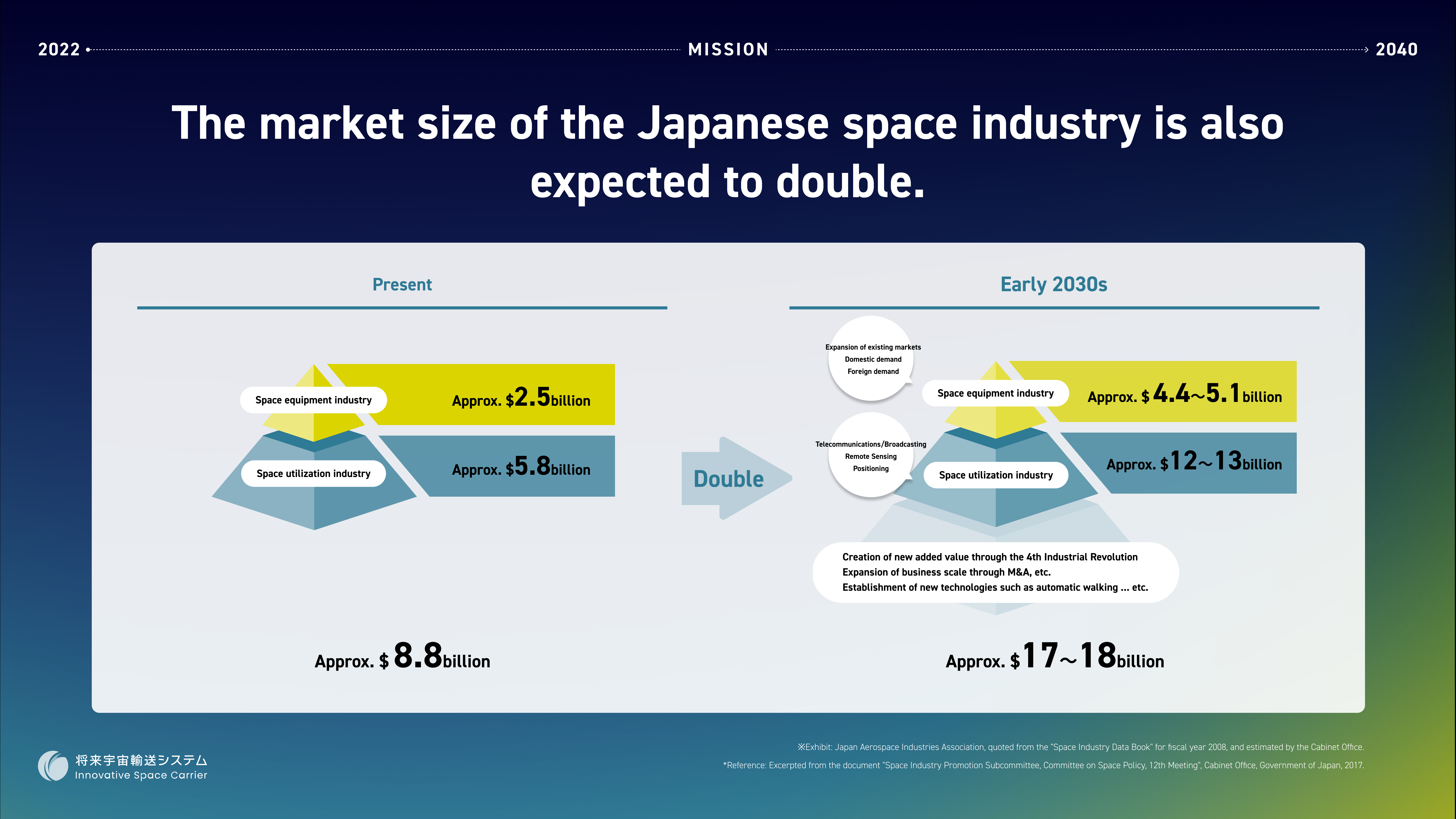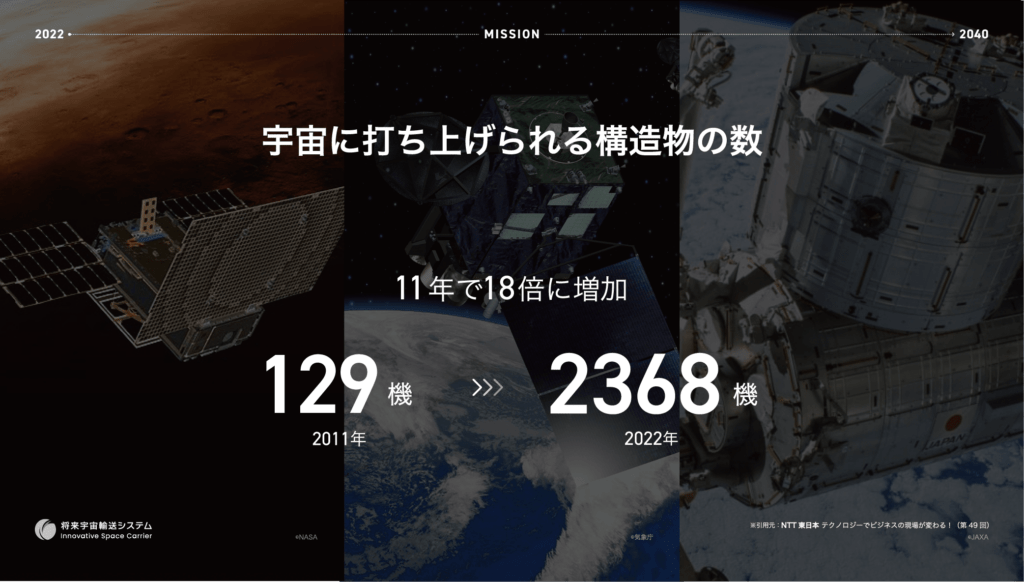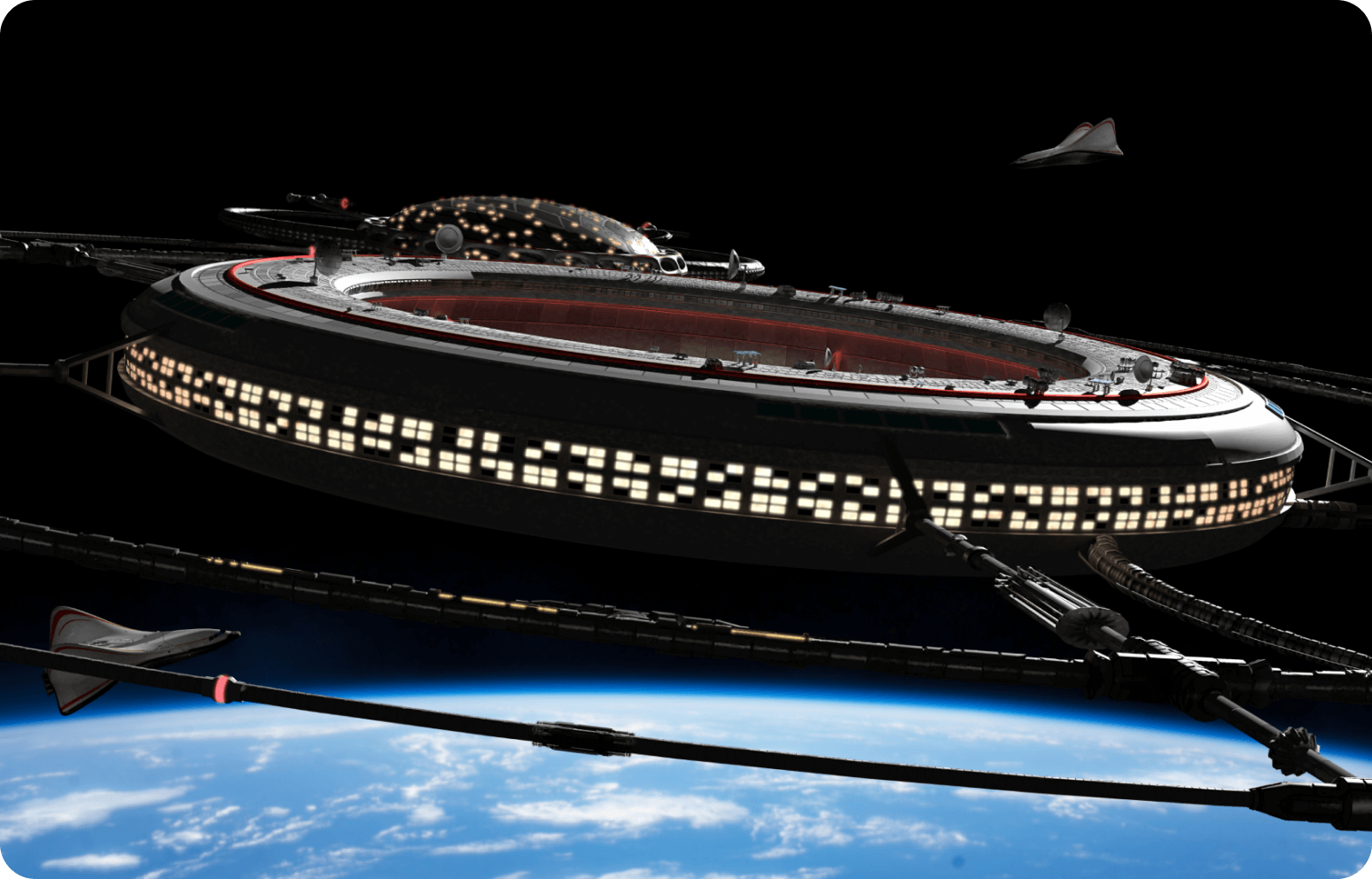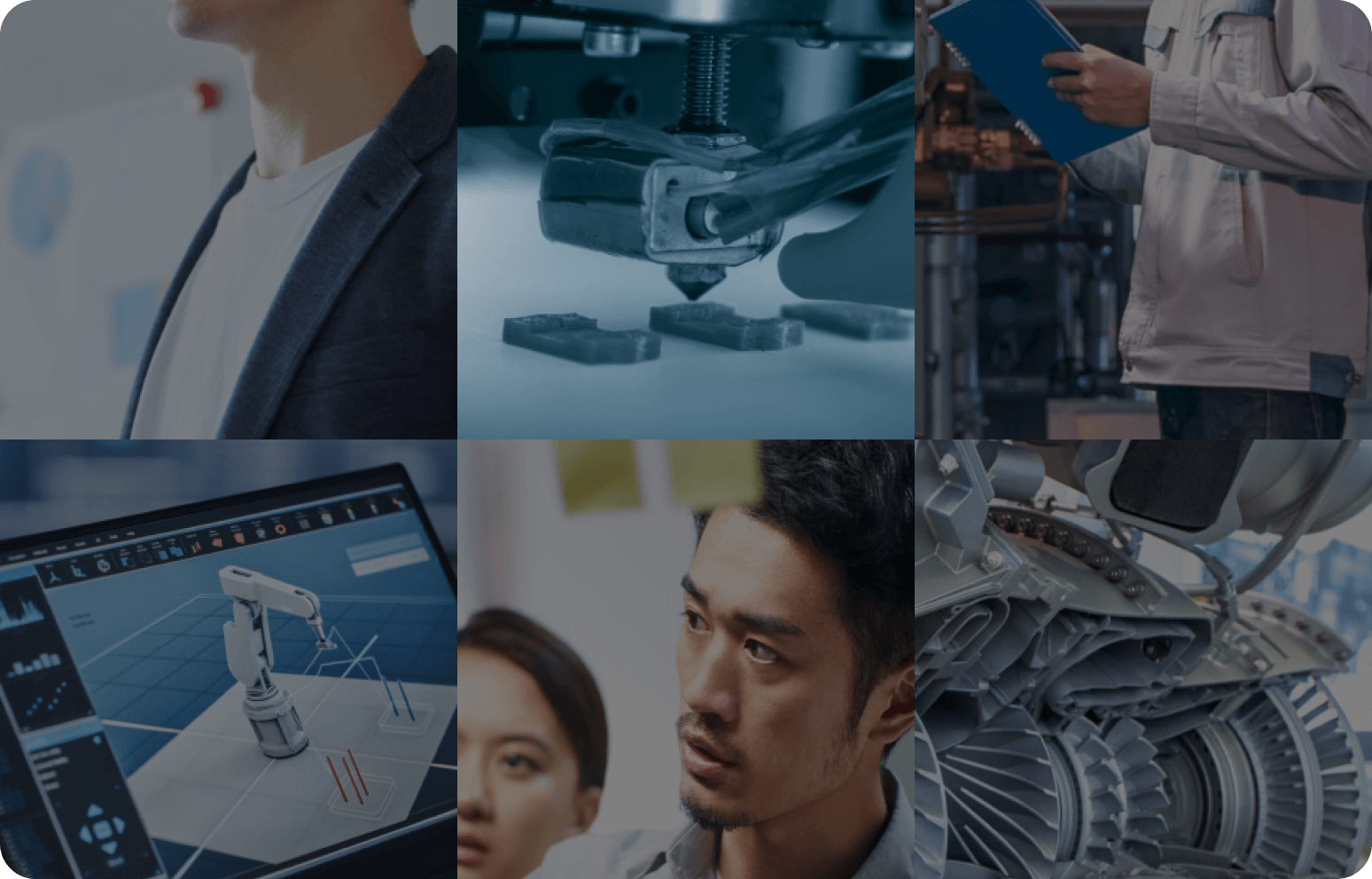Space exploration is no longer a dream but a goal
The space utilization business is attracting attention as the next growth market after the IT industry in the world.
When we were born, it was still the world of comic books and movies, but 20 years from now, business and life will be more related to space.
The year 2040 should be the year when everyone will have access to space.
Working in a space-related career may still seem a world away to me, but it is no longer the case.

In 2015, when our CEO, Mr. Hatada, started working for the Cabinet Office to promote private space business, there were only about 10 companies in Japan, but as of 2023, there are more than 70 venture companies in the space industry doing various businesses using space.
1. Transporting people and goods
Many companies do not disclose the development and initial costs of transportation systems. The development cost of a rocket is over 200 billion, which is equal to or more than the cost of a launch vehicle. In Japan, JAXA is developing the Epsilon launch vehicle and the H2 and H3 core launch vehicles, but in the future, private companies are expected to take the lead in the development of launch vehicles that will transport people and goods at high frequencies.
2. Satellite data technology utilization
This business uses data acquired from launched satellites to provide a variety of services. Familiar examples include positioning satellites such as GPS, observation satellites such as the Himawari weather satellite, and satellite-based communication and video services. In the telecommunications field, Wi-Fi connectivity on airplanes is now possible because of the existence of satellite Internet.
3. Build and operate infrastructure
There is "ground system utilization," which manages and operates launched satellites, and "in-space orbital services," which performs maintenance and waste disposal after launch.
4. Space travel/Immigration/Staying in space
is bustling abroad and is projected to be worth $14 billion by 2028; in 2023, SpaceX is expected to launch a lunar travel tour; in 2026, SpaceX is expected to launch a lunar travel tour; in 2027, SpaceX is expected to launch a lunar travel tour; in 2028, SpaceX is expected to launch a lunar travel tour; in 2029, SpaceX is expected to launch a lunar travel tour.
5. Exploration and resource development
There are two types of exploration and resource development businesses that are essential for space advancement: human space exploration and non-human space exploration using spacecraft. Compared to other space businesses, the exploration and resource development business has many technical challenges and is difficult to monetize.
6. Others
・Observation and recovery business of space waste
・Space utilization business
・Space insurance business, etc.
In the 20th century, most space activities were led by government agencies and conducted under the name of space exploration as a government-supported business. The expectations for the future of the space industry are growing even greater.




SpaceX was cited as the most successful example of this.

In the global market, many players are in the business of utilizing data acquired from satellites on Earth, and only a few are in the business of space activities themselves.

Transportation of people and goods into space is essential for private companies to conduct businesses that utilize space itself, such as businesses that realize space travel, migration, and stay, and businesses that explore the moon and Mars and develop resources.
In fact, the number of companies seeking to commercialize space transportation is small and no major innovation has occurred in 20 years.
The reason is that it is more difficult than other areas, requiring high technology and financial resources.
In the United States, private companies are opening up the transportation market in collaboration with NASA, and in Japan, the Ministry of Education, Culture, Sports, Science and Technology (MEXT) Roadmap Study Group's July 2022 report states that future space transportation systems need to be developed jointly by the public and private sectors. A comprehensive system that achieves drastic cost reduction (about 1/10 of H3 rocket) is indispensable, and large private demand is expected in the future.

Based on the Council for the Promotion of Commercialization of Space Transportation by the Private Sector, it is stated that JAXA aims to establish a business system centered on the private sector, to narrow down the necessary elemental technologies by around 2025, and to achieve a private sector-led flight demonstration in the early 2030s, and that JAXA will provide necessary support through dialogue based on the private sector's business plan.
A phased technology demonstration stage gate is also being considered to support private sector capacity building through milestone payments and anchor tenancy.
We believe that further technological innovation in the field of space transportation is the key to realizing a world in which business and life in space becomes more accessible.



